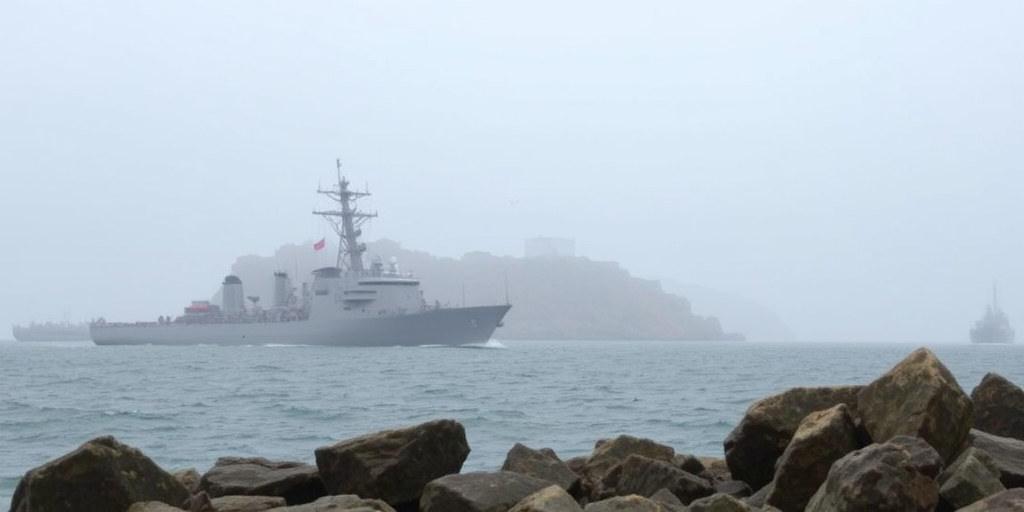How does unforgiving terrain fundamentally reshape modern combat strategy? The Falklands War redefined military engagement by fusing revolutionary amphibious operations with adaptive ground tactics amid harsh, isolated landscapes. In this post, we dissect pivotal maneuvers—from coordinated landings to complex island logistics—that transformed conventional warfare into a dynamic, terrain-driven struggle. Our analysis traces these historic operations, revealing insights that continue to inform contemporary strategic planning and operations on rugged battlefields.
Ground Operations on Rugged Terrain in The Falklands War: Modern Strategy on Rugged Terrain

Operation Sutton initiated a vital phase of British ground operations, with amphibious landings at San Carlos Bay on May 21, 1982. British forces rapidly established a precarious beachhead, despite constant Argentine air and ground counterattacks. Infantry units faced immediate logistical hurdles as they advanced into territories shaped by rocky outcrops, steep inclines, and unpredictable battlefield conditions. These factors directly influenced troop mobility and shaped tactical decisions as commanders sought to adapt their maneuvers to an unforgiving environment.
- Limited mobility due to uneven surfaces
- Disrupted supply routes through narrow mountain passes
- Impaired communications caused by natural obstructions
- Elevated exposure to ambushes in dense vegetation
Intense engagements further exemplified these challenges during the Battle of Goose Green and the subsequent operations around Stanley. Ground forces, while overcoming numerical inferiority, contended with hidden enemy positions in rugged hill terrain, such as at Mount Longden and Mount Tumbledown. The bullet-pointed tactical obstacles underscore the multifaceted difficulties combatants endured, from navigating treacherous terrain to maintaining coherent logistics under continuous enemy pressure.
The overall battle outcomes were critically shaped by the terrain’s impact on movement and command. Adaptations in infantry tactics allowed British units to gradually secure key positions despite the adverse conditions. Disrupted supply lines and difficult terrain modified force deployments, compelling rapid tactical adaptations. This interplay between environmental challenges and innovative military responses not only determined the immediate battlefield success but also refined modern operational doctrines for handling isolated, rugged regions in prolonged conflicts.
Tactical Adaptations and Modern Innovations: The Falklands War: Modern Strategy on Rugged Terrain

British commanders rapidly implemented innovative strategies to counter the harsh climate and rugged landscape, leveraging both aggressive infantry maneuvers and breakthrough aerial techniques. The pressing need for adaptable tactics led to the integration of contemporary combat technology with traditional warfare principles. Commanders swiftly recalibrated their approach in response to rapidly evolving battlefield conditions, ensuring that each advancement addressed the immediate challenges posed by unpredictable terrain and harsh weather.
On the aerial front, the use of vertical/short takeoff and landing jets enabled swift repositioning and rapid support for ground operations. The introduction of these aircraft underscored a new era of agile force deployment. British forces demonstrated an ability to adapt technologies, integrating them into a broader operational framework that emphasized speed and responsiveness across multiple combat domains. In addition to these aerial exploits, a set of innovative methods was applied across the board:
- VTOL jet utilization
- Real-time intelligence updates
- Rapid force redeployment
- Specialized amphibious assault tactics
These innovations not only enhanced immediate combat efficiency but also provided a template for modern operational procedures, ensuring that forces remained flexible in the face of adversity.
Ground operations adapted concurrently, with infantry units implementing dedicated assault plans and dynamic repositioning strategies to navigate the rugged terrain effectively. Aggressive maneuvers allowed for the quick seizure of advantageous positions while offsetting enemy advantages posed by natural obstacles. This synthesis of contemporary technology with tailored ground tactics continues to influence modern combat doctrines, reflecting the enduring impact of rapid tactical adaptations developed during the conflict.
Final Words
In the action, the analysis detailed a comprehensive timeline, tactical adjustments, and multifaceted operations that defined battle outcomes.
Insights into historical foundations, ground challenges, integrated maneuvers, tactical innovations, and lasting legacy were skillfully laid out.
Each section illustrated critical operational lessons and modern implications, emphasizing how adaptations shaped conflict dynamics.
This review of The Falklands War: Modern Strategy on Rugged Terrain validates the enduring relevance of strategic innovations and the power of coordinated military efforts.
The narrative reinforces that even in harsh terrains, precise planning and adaptability secure operational success.
FAQ
Q: Why did Argentina lose the Falklands War?
A: Argentina lost the Falklands War due to British naval superiority, advanced air capabilities with Harrier jets, superior military training, and effective amphibious operations that overcame Argentine defenses.
Q: How many casualties occurred in the Falklands War?
A: The conflict resulted in 649 Argentine military deaths, 255 British military casualties, and 3 civilian Falkland Islander deaths during the 74-day war from April to June 1982.
Q: What strategic importance do the Falklands Islands hold?
A: The Falklands possess crucial strategic value through control of South Atlantic shipping lanes, potential offshore oil reserves, and proximity to Antarctica, making them vital for military and economic interests.
Q: What were the key tactical innovations during the Falklands War?
A: The conflict showcased innovative use of Harrier VTOL aircraft, special forces reconnaissance operations, night-fighting capabilities, and integrated amphibious assault techniques across challenging terrain.
Q: How did terrain impact military operations?
A: The rugged, mountainous terrain forced British forces to adapt their assault strategies, implement specialized infantry tactics, and utilize helicopter operations for troop movement and supply distribution.
Q: What role did naval forces play in the conflict?
A: British naval forces established maritime superiority through carrier-based air operations, submarine warfare (notably sinking the General Belgrano), and maintaining critical supply lines across 8,000 miles.
Q: How did the conflict influence modern military doctrine?
A: The war revolutionized amphibious warfare doctrine, emphasized the importance of air superiority, demonstrated the value of special forces operations, and highlighted the need for robust logistics in expeditionary warfare.
